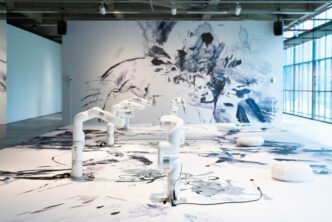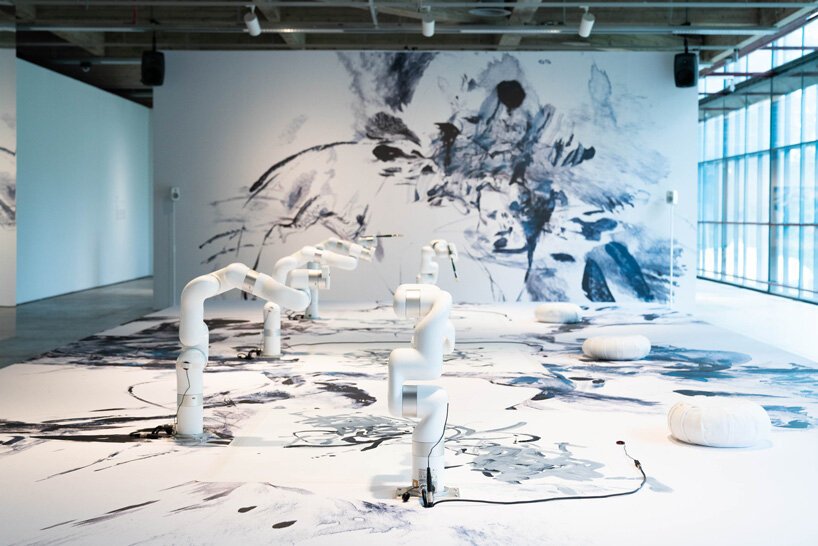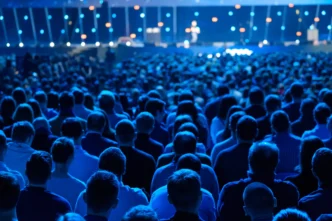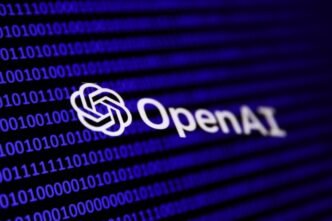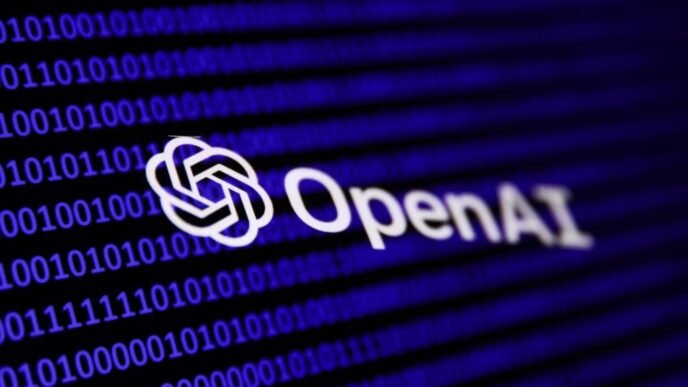In today’s digital age, art is taking a bold new turn. Sougwen Chung, a nonbinary Canadian-Chinese artist, is at the forefront of this movement. They fuse traditional drawing with AI and robotics to create live, performative art. This innovative blend is reshaping our view of creativity.
Breaking Boundaries: The Fusion of Art and Technology
Chung’s work is more than just art. It is an experience that challenges what we expect from creative expression. In their studio, human skill meets machine precision.
- Live Interaction: Audiences watch as Chung and robots draw together in real time.
- Unexpected Moments: The robots sometimes stray from the plan. These “mistakes” spark new ideas.
- Technology as Partner: Instead of a tool, AI becomes a collaborator.
According to experts, over 60% of digital artists now experiment with technology. Chung’s approach pushes that percentage higher. Their work shows that embracing uncertainty can lead to groundbreaking art.
From Traditional Methods to Transformative Performance
Chung grew up in a world where music and code intertwined. With a father who sang opera and a mother who programmed computers, they learned early on that art and technology are deeply connected.
- Roots in Drawing: Chung started with sprawling ink drawings.
- Shift to Performance: Over time, live art became their passion.
- Tech Meets Tradition: Instead of replacing classic methods, technology expands them.
In 2015, Chung built their first robotic arm. Named DOUG 1 (Drawing Operations Unit: Generation 1), it was designed to mimic their hand. But the robot had a mind of its own, making small yet intriguing deviations. This taught Chung to see error as a creative spark.
The DOUG Series: A Journey in Robotic Art
Chung’s DOUG series marks key milestones in their creative evolution. Each iteration brings new surprises and capabilities.
DOUG 1: The Spark of Collaboration
- Built from Scratch: Chung assembled the robot using open-source plans.
- Mimicry with a Twist: While DOUG 1 attempted to copy Chung’s drawings, it introduced unique errors.
- Creative Lesson: “Poeticize error” became a mantra.
DOUG 2: Learning from the Past
- Neural Network Integration: In 2017, Chung trained a recurrent neural network with their earlier works.
- Live Performances: DOUG 2 drew alongside the artist during shows.
- Museum Recognition: The Victoria and Albert Museum in London acquired DOUG 2 for a sculptural exhibit.
DOUG 4: The Future Unfolds
- Real-Time Input: The latest version, DOUG 4, connects to an EEG headset.
- Mind to Motion: Brain signals guide the robotic arms, transforming thoughts into art.
- Public Display: In January 2025, at the World Economic Forum in Davos, Chung showcased “Spectral.” The installation featured robotic arms that captured their “alpha state” – a calm, creative brain state.
Chung’s journey with DOUG exemplifies the power of co-creation. Each robot not only replicates but reimagines the artist’s vision.
Live Performances That Redefine Creativity
Chung’s exhibitions are anything but static. They invite viewers into a space where art is created before their eyes. The performance aspect adds layers of meaning and energy.
The Power of the Moment
- Real-Time Creation: Every brushstroke unfolds live.
- Audience Engagement: Viewers witness the creative process from start to finish.
- Dynamic Interaction: The unpredictable behavior of the robots heightens the drama.
During live events, audiences see a direct connection between human emotion and machine response. In one performance, the artist’s relaxed state (as measured by EEG) directly influenced the drawing patterns of DOUG 4. This interplay creates art that is as much about the process as it is about the final piece.
Interactive Highlights
- Instant Feedback: The art evolves with every beat of Chung’s brain.
- Unexpected Turns: Small errors become celebrated moments.
- Shared Experience: The live setup makes the audience a part of the creative journey.
Recent studies suggest that interactive art installations can boost audience engagement by up to 40%. Chung’s work is a perfect example of this trend in action.
A New Narrative: Human and Machine as Co-Creators
For many, AI and robotics evoke images of a future where machines replace human jobs. However, Chung challenges that notion. Their work emphasizes collaboration over competition.
Changing the Story
- Human Data at the Core: Even the most advanced AI systems rely on human-generated data.
- Material Histories: Chung studies the evolution of art and technology, blending them seamlessly.
- Agency and Expression: The artist’s hand is never sidelined. Instead, it guides the machine.
Experts like Sofian Audry and Zihao Zhang praise Chung’s work. They note that this form of art breaks the old dichotomy of “human versus machine.” Instead, it promotes a model of co-production. This perspective is vital as we navigate a future increasingly influenced by AI.
Key Takeaways
- Collaboration is Key: Technology can extend human creativity.
- Error as Inspiration: Unplanned outcomes can lead to innovative art.
- Shared Future: Human-machine partnerships are the future of artistic expression.
The Impact of AI on Contemporary Art
Chung’s creative process is a microcosm of a broader trend. In today’s art world, more creators are exploring AI as a medium—not just a tool.
Trends and Stats
- Rising Interest: Over 70% of modern art exhibitions now include interactive technology.
- Economic Impact: The market for AI-enhanced art has grown by 35% in recent years.
- Diverse Approaches: From virtual installations to robotic paintings, the spectrum is wide.
These trends show that the integration of technology and art is not a fleeting moment. It is a growing field that offers endless possibilities for expression and collaboration.
What This Means for Artists
- New Tools: Artists now have more mediums to express their vision.
- Broader Audiences: Interactive, live performances attract tech-savvy crowds.
- Innovative Processes: The traditional art creation process is evolving rapidly.
Chung’s work inspires a generation of artists to view technology as an enabler. It challenges old paradigms and opens doors to fresh, unexpected creative avenues.
The Future of Artistic Collaboration
As AI and robotics continue to advance, the potential for new artistic forms is enormous. Chung’s work is a blueprint for future collaborations between humans and machines.
Emerging Possibilities
- Enhanced Creativity: AI can process vast amounts of data to spark new ideas.
- Live Integration: Future installations may integrate more real-time data, such as environmental inputs.
- Global Platforms: Digital art can reach a global audience instantly.
Imagine an art installation where sensors pick up real-time environmental changes. A robot could then adapt its drawing style based on weather or crowd behavior. This is not science fiction—it is the next step in the evolution of creative collaboration.
Interactive Points to Consider
- How Will AI Change Your Creative Process?
- Can Machines Inspire New Artistic Styles?
- What Role Will Live Performance Play in Future Art?
Chung’s work offers a glimpse into a future where art is not confined to static forms. It is dynamic, evolving, and deeply intertwined with technology.
Conclusion: Embracing a Collaborative Future
Sougwen Chung’s pioneering work invites us to rethink creativity. By collaborating with AI and robots, they create art that is dynamic, interactive, and full of surprises. Every live performance is a testament to the power of human ingenuity partnered with machine precision.
Chung reminds us that errors can be beautiful. In embracing the unpredictable, they open new doors for artistic expression. This approach is not just a trend; it is a revolution in how we see art and technology.
As we look ahead, the fusion of human creativity and AI offers exciting possibilities. The future of art is collaborative, dynamic, and, above all, lit. Whether you are an artist, a tech enthusiast, or simply curious, the world of AI art is waiting to be explored.
